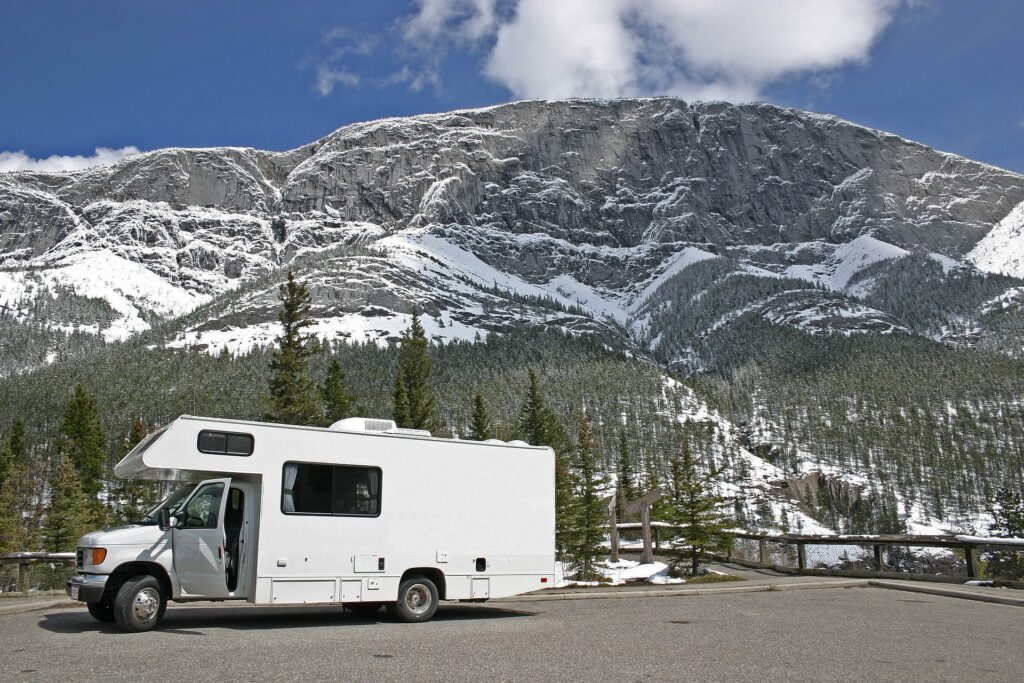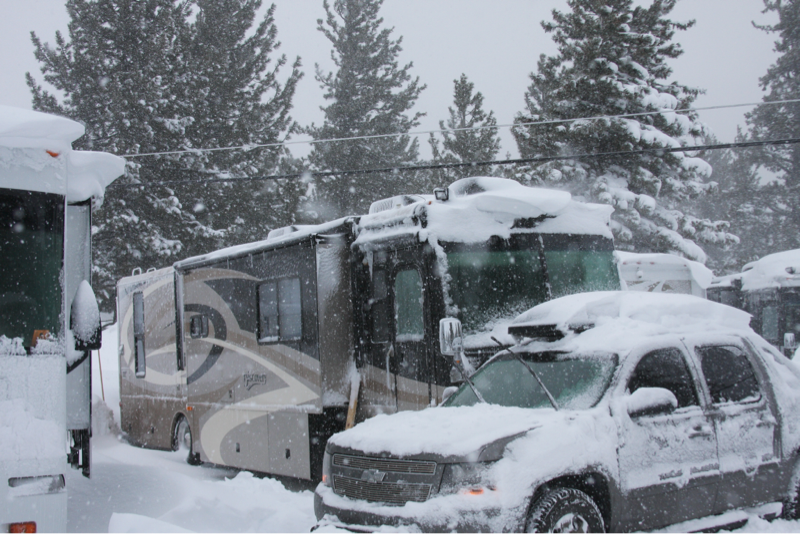
10 Essential Winter RV Travel Tips
One of the greatest advantages to owning a home on wheels is that you have the option to drive away from Old Man Winter…usually. Unfortunately, as many RVers eventually discover, making a fast break from freezing temperatures isn’t always possible.
If cross-country winter RV travel sends you into the polar vortex while in your RV, it pays to follow these 10 essential tips:
1. Service your furnace, LP gas, and water heater ahead of time.
Annual maintenance is a must for any RV owner, especially if you use your rig year-round. Have a professional inspect, and if necessary, service the heating systems in your rig which are critical for winter comfort.
2. Know your RV’s plumbing layout.
Do you know where your RV plumbing is routed throughout your rig? Study the schematics of your RV to prepare for potential trouble spots where water can collect and freeze. Any exposed lines, elbow connectors, or drafty places can mean frozen pipes in winter. You may want to add a remote temperature sensor to learn which parts of your RV are coldest and may need extra winter TLC.
3. Add a catalytic heater.
Many RV furnaces don’t do a good enough job keeping the RV warm. These inefficient machines consume lots of propane and require a open flame reaching temperatures in excess of 1200° F. On the other hand, a catalytic heater uses a flameless platinum-based chemical reaction to heat a space, which is much safer since the heating process only reaches 750° F for effective operation.
4. Insulate drafty spots.
Inspect your rig to find out where cold air can find its way inside. From exterior cabinets to kitchen plumbing, RVs are notoriously drafty. Although you need a fresh air supply if you add a catalytic heater to your rig, all of the other spots that invite breezes inside should get padded with some type of foam or mylar insulation.
5. Travel with a hairdryer.
Hairdryers aren’t just for big hair. They come in handy for unexpectedly frozen water hoses, satellite dishes, and even if your jacks freeze to the asphalt.

6. Don’t let your water hose freeze.
If you’re parked with full-hookups and a cold snap suddenly hits your area, a standard RV water hose will be one of the first things to freeze. Although it’s a far better idea to disconnect your hose in the first place, if you don’t want to you can purchase a galvanized steel RV water hose or some RV water line heat tape to keep fresh water flowing during mildly cold weather.
7. Choose sunny, wind-free parking spots.
Should you have the opportunity to choose your own campsite either at a RV park or while boondocking in a parking lot, look for the sunniest spot you can find. If you can locate one with a wind break, you just scored! Also be mindful about which way the wind is blowing, however, and park your rig so that winds will hit the front or rear of the coach, not the sides.
8. Open interior cabinets and drawers to keep heat circulating around plumbing.
Although your heater will work a little harder to fill more space in your rig, opening up cabinets and drawers will help get more heat to critical plumbing fixtures.
9. Keep your fresh water tank filled.
If you’re parked and you know it’ll be too cold to connect to utilities, a full-fresh water tank will ensure you can run plumbing and enjoy some creature comforts in the morning.
10. Use the oven.
No, we don’t mean use the oven to heat the rig, but rather use it to prepare hot meals. When you’re done baking turn it off but leave the oven door open to add extra heat to your rig.
Do you have other winter RV travel tips? The iRV2 community is anxiously awaiting more!

Put a heated mattress pad on your bed. Not a heated blanket. We put a traditional mattress pad over ours to keep it clean.
Consider pulling some slides in, lots less area to keep heated and slides seal up better when retracted
I’ve camped with a propane heated coach and now I have one with a Oasis heating system. I found the
Oasis system or Auqua hot to be superior. My rv maintains heat in our 2016 Dutchstar very efficiently, it uses diesel fuel for heat… superior to propane.
Just for info
We also put a small electric heater (on low and using the 30 amp port on the pedestal via an extension cord) in the wet bay where all the water valves are. While there is a furnace ducted outlet in the basement, it does not seem to extend to the wet bay. We also put a temperature sensor in that bay so we know when we have to deal with any issues.
What kind of fancy-dan RV do you have that has a basement?